
IEEE Geoscience and Remote Sensing Letters
Scope & Guideline
Innovating Insights in Geoscience and Remote Sensing
Introduction
Aims and Scopes
- Remote Sensing Techniques and Applications:
The journal publishes research on novel methods and applications in remote sensing, including satellite, aerial, and ground-based observations, aimed at environmental monitoring, disaster management, and resource management. - Data Processing and Analysis:
There is a strong emphasis on the development of advanced algorithms and models for processing and analyzing remote sensing data, including machine learning, deep learning, and statistical methods for feature extraction, classification, and change detection. - Geophysical Imaging and Inversion Techniques:
The journal covers research related to geophysical imaging techniques, such as synthetic aperture radar (SAR), ground-penetrating radar (GPR), and seismic imaging, focusing on inversion methods and their applications in subsurface characterization. - Interdisciplinary Approaches:
Research that integrates remote sensing with other disciplines, such as meteorology, oceanography, and ecology, is encouraged, highlighting the interconnectedness of environmental systems. - Innovative Sensor Technologies:
The journal highlights advancements in sensor technologies, including the development of new sensors and platforms for collecting remote sensing data, with a focus on improving accuracy and resolution.
Trending and Emerging
- Machine Learning and Artificial Intelligence:
There is a significant increase in the application of machine learning and AI methodologies for remote sensing data analysis, including classification, change detection, and predictive modeling, showcasing the integration of these technologies in geoscience research. - Multimodal and Multisource Data Fusion:
Research that combines data from various sources (e.g., optical, SAR, LiDAR) is on the rise, emphasizing the importance of integrating diverse datasets to enhance the accuracy and robustness of remote sensing applications. - Real-Time Processing and Applications:
A growing trend towards real-time data processing and applications is evident, with studies focusing on developing frameworks that allow for immediate analysis and decision-making in response to environmental changes. - Climate Change and Environmental Monitoring:
Research addressing climate change impacts and environmental monitoring using remote sensing technologies is increasingly prominent, reflecting global priorities in sustainability and conservation efforts. - Automated and Semi-Automated Techniques:
The implementation of automated and semi-automated techniques in remote sensing tasks, such as land cover classification and object detection, is becoming more prevalent, driven by the need for efficiency and scalability in analyses.
Declining or Waning
- Traditional Remote Sensing Techniques:
There has been a noticeable decline in publications focusing solely on traditional remote sensing techniques without integration of advanced computational methods or interdisciplinary approaches, indicating a shift towards more innovative and hybrid methodologies. - Basic Statistical Methods:
Papers relying on basic statistical methods for data analysis are becoming less common, as the field moves towards more complex machine learning and deep learning techniques that offer greater predictive power and insights. - Standalone Environmental Monitoring Studies:
Research focused exclusively on environmental monitoring without the application of remote sensing technologies or data fusion approaches is waning. The trend is leaning towards studies that incorporate multiple data sources and advanced analytical techniques.
Similar Journals
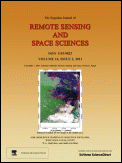
Egyptian Journal of Remote Sensing and Space Sciences
Fostering Global Collaboration in Earth and Space StudiesThe Egyptian Journal of Remote Sensing and Space Sciences, published by Elsevier, is a premier open-access journal dedicated to advancing the fields of Remote Sensing and Space Sciences. Since its inception, the journal has gained a prominent reputation, currently holding a prestigious Q1 ranking in Earth and Planetary Sciences and placing within the top 10% of its field according to Scopus metrics. With an ISSN of 1110-9823 and an E-ISSN of 2090-2476, the journal features a diverse range of scholarly articles that explore both theoretical and practical aspects of remote sensing technologies and space science innovations, thus appealing to researchers, professionals, and students alike. Established in 2003 and fully transitioning to an open-access model in 2010, the journal aims to disseminate knowledge and foster collaboration across the globe by providing wider accessibility to groundbreaking research findings. Its commitment to quality and innovation is a catalyst for intellectual development in these dynamic and evolving disciplines.

Geomatik
Exploring the frontiers of geospatial innovation.Geomatik is a pioneering open-access journal dedicated to advancing the field of geomatics, encompassing disciplines such as geospatial data analysis, remote sensing, and geographic information systems. Founded in 2016 by the esteemed Geomatik Journal publisher, this peer-reviewed platform aims to disseminate high-quality research and innovative methodologies to a global audience. With its E-ISSN 2564-6761, Geomatik facilitates accessibility to cutting-edge studies that address vital challenges in environment monitoring, urban planning, and spatial data management. The journal not only encourages collaboration among researchers and practitioners but also serves as an essential resource for students seeking to deepen their understanding of geomatic sciences. Its commitment to open access fosters scholarly exchange and enhances visibility for authors, contributing to significant advancements within the geomatics community.

Remote Sensing Letters
Bridging Disciplines with Cutting-edge Remote Sensing ResearchRemote Sensing Letters, published by Taylor & Francis Ltd, is a distinguished journal that serves a vital role in the fields of Earth and Planetary Sciences as well as Electrical and Electronic Engineering. With an ISSN of 2150-704X and an E-ISSN of 2150-7058, this journal has been disseminating cutting-edge research since its inception in 2010, converging toward a future of innovation and technological advancement scheduled through 2024. The journal is recognized for its impactful scholarship, achieving a Q2 quartile ranking in both its categories as of 2023, highlighting its significance in enhancing academic discourse and applications in remote sensing methodologies. Although it does not operate under an open-access model, it provides access to essential findings that address contemporary challenges in the remote sensing domain. Located in the United Kingdom at 2-4 Park Square, Milton Park, Abingdon, OX14 4RN, Remote Sensing Letters is a crucial resource for researchers, professionals, and students committed to advancing their understanding and application of remote sensing technologies.
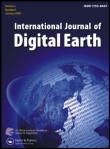
International Journal of Digital Earth
Transforming our understanding of the planet, digitally.Welcome to the International Journal of Digital Earth, a premier open-access journal published by Taylor & Francis Ltd, dedicated to advancing the field of digital geoscience. With its ISSN 1753-8947 and E-ISSN 1753-8955, this journal has established itself as a vital resource for scholars and practitioners alike since its inception in 2008. The journal is at the forefront of interdisciplinary research, showcasing a diverse scope from Earth sciences to computer science applications, evidenced by its impressive ranking in the 2023 Scopus database. It holds a Q1 categorization in Earth and Planetary Sciences, with a percentile rank among the top 16% of its peers, and also stands out in the Q2 quartile for both Computer Science Applications and Software disciplines. The journal's commitment to open access, established in 2022, underscores its dedication to disseminating knowledge and fostering collaboration. By providing a platform for high-quality research, the International Journal of Digital Earth plays a critical role in addressing the complexities of our changing planet through innovative digital solutions. Whether you are an experienced researcher or a student, this journal is an essential addition to your academic toolkit.
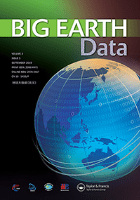
Big Earth Data
Advancing the Frontiers of Earth Science and TechnologyBig Earth Data is a prestigious open-access journal that has been at the forefront of advancing research in the intersection of earth science and computer technology since its inception in 2017. Published by TAYLOR & FRANCIS LTD in the United Kingdom, this journal is dedicated to disseminating groundbreaking findings and innovative methodologies in the fields of Earth and Planetary Sciences and Computer Science Applications. With a commendable impact factor and an impressive positioning in the Scopus rankings—claiming Q1 status in Computers in Earth Sciences and Q2 in Computer Science Applications—it serves as a vital resource for researchers, professionals, and students alike. The journal encourages submissions that explore the integration of big data technologies in managing, analyzing, and visualizing earth-related data, thereby fostering interdisciplinary collaboration. Since embracing its open-access model, Big Earth Data has enhanced the accessibility of high-quality research, promoting a broader dialogue in the scientific community and contributing to informed decision-making in global environmental challenges.
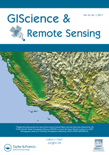
GIScience & Remote Sensing
Fostering Collaboration for a Deeper Understanding of Our PlanetGIScience & Remote Sensing, published by Taylor & Francis Ltd, stands as a leading journal in the realm of Earth and Planetary Sciences, holding a prestigious Q1 ranking. Since its transition to Open Access in 2022, the journal has significantly broadened its reach, enabling researchers, professionals, and students across the globe to disseminate and access cutting-edge research related to geographic information science and remote sensing technologies. With a focus on publishing high-quality, peer-reviewed articles that contribute to the understanding of the Earth’s processes, environments, and interactions, this journal not only supports advancements in scientific knowledge but also fosters interdisciplinary collaboration. Based in the United Kingdom, GIScience & Remote Sensing continues to pave the way for innovative methodologies and applications, solidifying its vital role within the scientific community.

Traitement du Signal
Illuminating the Path of Electrical InnovationTraitement du Signal, published by the INT Information & Engineering Technology Association, is a distinguished journal that serves the vibrant field of Electrical and Electronic Engineering. With an ISSN of 0765-0019 and an E-ISSN of 1958-5608, this journal has made significant contributions to the discipline since its inception. While it currently operates under a non-open access model, it maintains its commitment to disseminating valuable research from 2010 to 2023, despite its recent discontinuation in Scopus coverage. Recognized in the third quartile (Q3) of the category in 2022, the journal provides a platform for researchers, professionals, and students to publish their findings on topics such as signal processing, communications, and related technologies. By curating high-quality articles, Traitement du Signal plays a crucial role in advancing knowledge and fostering innovation within the electrical and electronic engineering community.

Science of Remote Sensing
Transforming Data into Insight for Environmental ProgressScience of Remote Sensing, published by Elsevier, is a premier open-access journal that has been at the forefront of interdisciplinary research since its inception in 2020. With an impressive impact factor and its status in the Q1 quartile category for both Earth and Planetary Sciences and Forestry, this journal effectively caters to a diverse audience, including researchers, professionals, and students interested in the latest developments in remote sensing technologies and their application across varied domains. Located in the Netherlands, the journal provides a collaborative platform for scientific discourse, ensuring that impactful research is easily accessible to the global community. As it converges its focus through to 2024, Science of Remote Sensing continues to promote innovation and excellence, establishing itself as a vital resource for advancing knowledge in both the agricultural and environmental sectors. With a robust ranking (Rank #6 in Forestry and Rank #8 in General Earth and Planetary Sciences), it is well-positioned to contribute significantly to ongoing scientific advancements.
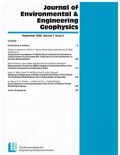
JOURNAL OF ENVIRONMENTAL AND ENGINEERING GEOPHYSICS
Transforming Knowledge into Action for a Greener PlanetJOURNAL OF ENVIRONMENTAL AND ENGINEERING GEOPHYSICS, published by the ENVIRONMENTAL ENGINEERING GEOPHYSICAL SOC, serves as an essential platform for the dissemination of cutting-edge research in the interconnected fields of environmental engineering, geophysics, and geotechnical engineering. This journal, with the ISSN 1083-1363 and E-ISSN 1943-2658, boasts a solid reputation, reflected in its Q3 rankings in several categories as of 2023. As it converged from 2001 to 2024, the journal has evolved to meet the increasing demand for innovative solutions to contemporary environmental challenges. Researchers are encouraged to submit original articles that contribute meaningfully to our understanding of the subsurface environment and its engineering implications. The journal is indexed in Scopus, with commendable rankings including 72nd out of 165 in Geophysics, highlighting its role in advancing knowledge and application in Earth and Planetary Sciences. Although not an open access journal, subscribers and institutions alike recognize the value of its rigorous peer-reviewed content, ensuring that professionals and scholars are equipped with the latest findings and methodologies in this dynamic field.

Geophysics and Geophysical Exploration
Unlocking Earth's Secrets with Cutting-Edge Exploration TechniquesGeophysics and Geophysical Exploration is a prestigious journal dedicated to advancing the fields of geophysics and geophysical exploration. Published by the Korean Society of Earth & Exploration Geophysicists, this journal serves as a vital platform for researchers, professionals, and students to share innovative findings and developments in geophysical methods and technologies. The journal covers a broad range of topics including but not limited to seismic analysis, subsurface modeling, and remote sensing techniques, aimed at addressing the complex challenges in Earth science exploration. Although it does not currently offer open access options, the journal maintains rigorous peer-review standards, ensuring high-quality and impactful research contributions. With its commitment to fostering knowledge exchange in the geophysical community, Geophysics and Geophysical Exploration plays a critical role in enhancing our understanding of the Earth, making it an essential resource for those interested in geoscience and related fields.